Sugar Pine Wood
- September 7, 2023
- 0 comment

Sugar Pine stands as a testament to nature’s grandeur, renowned for its towering presence and often soaring to heights of over 200 feet. This majestic coniferous tree, with its gracefully imposing stature, has been a pivotal lumber species on the West Coast, particularly revered for the straightness and impressive girth of its trunk. Historically, its significance in the timber industry is underscored by its abundant use in various construction and woodworking endeavors.
Texture
The wood of the Sugar Pine tree is characterized by its fine and consistent texture. This uniformity gives it an advantage over some other types of pine when it comes to woodworking since the predictable grain reduces the chances of splintering or unexpected reactions to tools.

Bark
Mature Sugar Pines are easily identifiable by their deeply furrowed bark. The bark’s ridges and channels are quite pronounced, giving the tree a textured look. Its color varies from a deep reddish-brown to a more muted brown, with age and environmental factors influencing its hue.

Furniture
When it comes to furniture-making, Sugar Pine stands out for several reasons. Its straight grain and fine texture make it easy to shape, carve, and sand. While it’s softer than hardwoods, it doesn’t splinter easily. It’s commonly used in dressers, nightstands, tables, and chairs, often in pieces where detailed carving or intricate joinery is required.

Firewood
As firewood, Sugar Pine has its limitations. While it does catch fire easily and burns with a nice flame, it tends to burn quickly. Its resin content can lead to creosote buildup in chimneys, which can be a fire hazard if not cleaned regularly.

Construction
Sugar Pine’s lightness and stability make it a popular choice for interior framing, paneling, and moldings. Though not as durable as some hardwoods, its ease of use, combined with adequate treatments, can make it a reasonable choice for certain construction elements.

Plywood
Plywood made from Sugar Pine is appreciated for its smooth surface and stability. This makes it ideal for interior applications where the plywood might be visible, like in cabinetry or certain types of furniture.

Board
Sugar Pine boards are a favorite among woodworkers for their consistency. They are often chosen for projects where the wood will be stained or painted, as they take finishes very well.
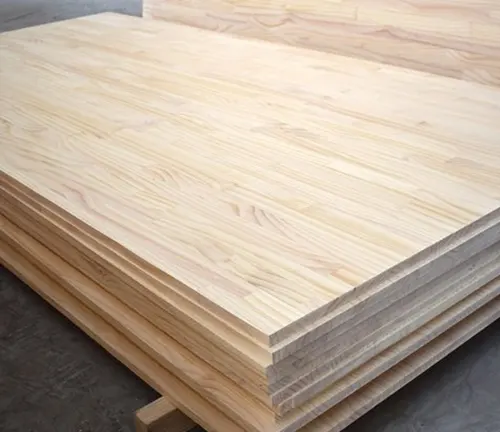
Railroad Cross Ties
Hardwoods with high resistance to decay are generally preferred for railroad crossties. Sugar Pine wouldn’t be the ideal choice given the rigorous demands of supporting rail tracks.
Pallet
For lightweight, temporary, or indoor storage, Sugar Pine can be a choice for pallets. But for heavy-duty, long-term, or outdoor storage, hardier woods would be preferable.
Fencing
Sugar Pine can be used for decorative fences or those that don’t have high demands for durability. For fences expected to last decades without much maintenance, other woods might be more suitable.

Wood Decking
For decks, Sugar Pine would need rigorous treatment to make it viable. Decks face consistent exposure to the elements, and untreated Sugar Pine would be susceptible to decay. Even with treatment, the softer nature of the wood makes it more prone to damage from heavy foot traffic.
Live Edge Siding
The trend of live edge siding, which keeps the natural edge of the wood, can utilize Sugar Pine. The wood would, however, need proper sealing and treatment to withstand the outdoor elements.
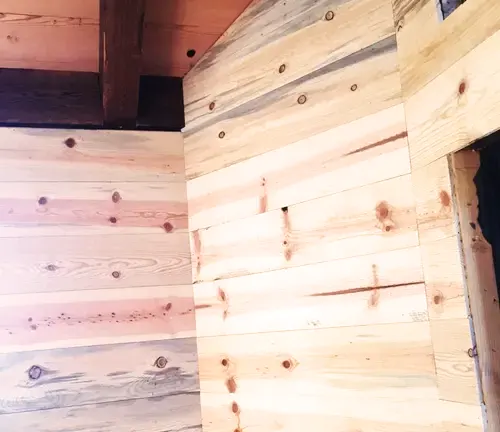
Beams
In interior settings where the beam is more decorative than load-bearing, Sugar Pine can be an aesthetically pleasing choice. For heavy structural support, other woods or engineered beams would typically be chosen for their strength and durability.

Frequently Asked Questions
- What makes Sugar Pine unique among other pines?
Apart from being the tallest pine species, Sugar Pine is known for its exceptionally large cones, which can be up to 2 feet in length! Its straight and tall trunk also makes it especially sought after in the lumber industry. - Is it true that Sugar Pine has the largest cones of any conifer?
Yes, Sugar Pine produces the largest cones of any conifer species, sometimes reaching lengths of 20-24 inches. - Why is it called ‘Sugar Pine’?
The name “Sugar Pine” comes from the sweet resin or sap that the tree produces. This sap was used by indigenous people and early settlers as a source of sugar. - How does the wood of Sugar Pine compare to other types of pine in terms of softness?
Sugar Pine is relatively soft compared to some other pines. This makes it easier to work with but also means it’s less resistant to wear and tear. - Is Sugar Pine resistant to pests?
Like many softwoods, Sugar Pine is susceptible to pests, especially when it’s not treated. It’s advisable to use treated Sugar Pine for outdoor applications or in areas prone to pests. - Why is Sugar Pine wood often used in musical instruments?
Sugar Pine has a resonant quality, making it a good choice for some musical instruments. Its fine grain and workability also allow for precision crafting, which is essential in instrument making. - How does Sugar Pine wood react to finishes like stains or paints?
The fine grain and even texture of Sugar Pine make it receptive to finishes. It takes stains uniformly, and its smooth surface results in a polished look when painted. - What’s the environmental status of the Sugar Pine tree?
While Sugar Pine trees were historically logged heavily, efforts are now in place to manage and conserve their populations. Some stands have been impacted by pests and diseases, but conservation efforts are helping to protect and restore these majestic trees. - Do Sugar Pines have any cultural or historical significance?
Indigenous tribes of North America used various parts of the Sugar Pine for medicinal purposes, food, and crafting. The tree’s sap, in particular, was an important resource for several tribes. - What are the primary challenges facing Sugar Pine forests today?
Sugar Pine forests face threats from logging, climate change, and the white pine blister rust, a non-native fungus that has significantly impacted populations.
In the vast tapestry of the world’s forests, the Sugar Pine stands tall, not just in stature but in historical and cultural significance. Its towering presence, crowned with the largest cones of any conifer, tells a tale of nature’s grandeur and human ingenuity. As the backbone of many architectural marvels and delicate instruments, this wood has been a silent witness to history, resonating with the melodies of nature and the rhythms of human progress. In the embrace of Sugar Pine wood, we find a harmonious blend of nature’s artistry and mankind’s craftsmanship. As we move forward, may we always cherish and protect these gentle giants that have given so much to our world.



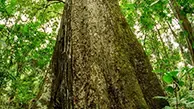
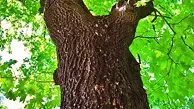

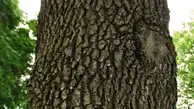
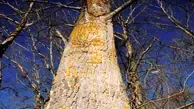




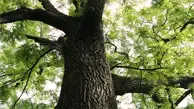
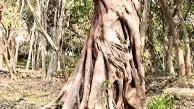
Leave your comment